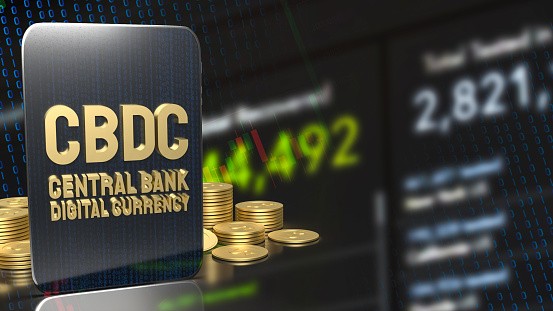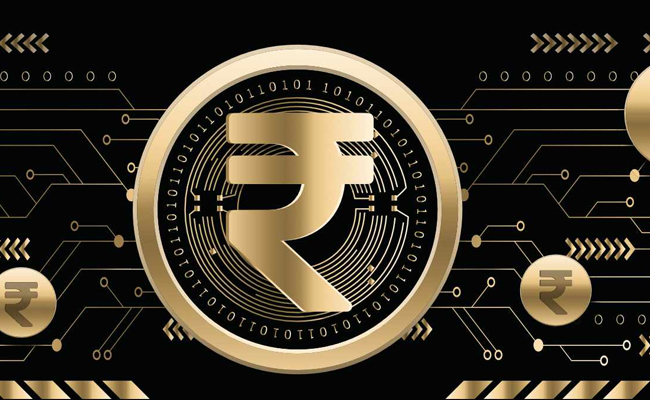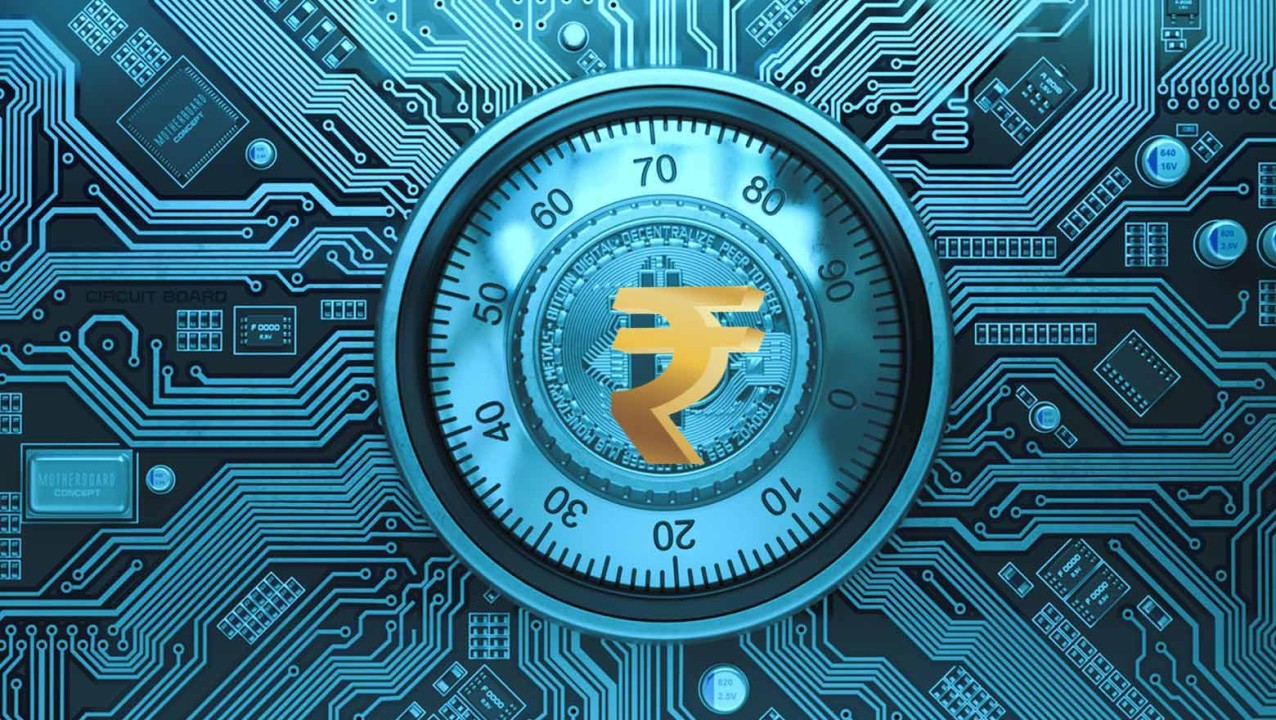Describe the Indian government’s new program for the digital rupee.

Describe the Indian government’s new program for the digital rupee. According to the Reserve Bank of India, the widely anticipated Central Bank Digital Currency (CBDC), a type of recognized cryptocurrency, will be made accessible to the general public on Thursday. The airman’s design’s first phase, which will cover specific locales and banks in an unrestricted stoner group (CUG) made up of sharing guests and merchandisers, will be introduced on December 1.
In the future, the service will be accepted in Ahmedabad, Gangtok, Guwahati, Hyderabad, Indore, Kochi, Lucknow, Patna, and Shimla. The list will include four new financial institutions, according to the RBI: Bank of Baroda, Union Bank of India, HDFC Bank, and Kotak Mahindra Bank. According to the statement, the airman’s area of responsibility might eventually be expanded to encompass other places, banks, and drug dealers.
The retailed rupee will be an electronic interpretation of cash and be used substantially for retail deals. Since it’ll be the central bank’s direct liability, it may be used by everyone, including the private sector, non-financial consumers, and businesses. It will also be appropriate to provide access to a safe plutocrat for payment and agreement.
The RBI has preliminarily stated that “CBD is a legal tender issued in digital form by a central bank. It’s exchangeable one-to-one with edict cash and is the same as edict currency. Its only distinction is in form. According to the RBI, drug addicts will be suitable to conduct deals with E-R using a digital portmanteau handed out by the sharing banks and kept on mobile phones, among other methods.
P2P (person-to-person) and P2M (person-to-trafficker) deals are both possible (PP2M). QR cannons are used to make payments to merchandisers at their physical locations. In the future, “thee-r” would represent physical plutocratic characteristics such as trust, safety, and agreement. Analogous to cash, it will not accrue interest and may be changed into other kinds of payment, including bank deposits, according to the RBI.
The general purpose (retail) and noncommercial orders of the digital rupee have been established by the RBI, grounded on the operation and functions carried out by it as well as the colorful situations of availability. To settle secondary request deals in government securities, the RBI introduced the digital rupee for the noncommercial sector on November 1.
Noncommercial CBDC is intended only to be penetrated by a small number of financial institutions. It can ameliorate operating costs, the operation of collateral, and liquidity operations by making the agreement systems for fiscal deals carried out by banks in the government securities (G-Sec) member, the interbank request, and the capital request more secure and effective.
The central bank claims that the Airmen program would evaluate the stability of digital rupee production, distribution, and retail usage in real-time. According to the statement, “the colorful features and operations of the three-R commemorative and armature will be tested in subsequent aviators based on the assignments learned from this airman.
The RBI had preliminary stated that, among other effects, the reduction of functional costs associated with physical cash operations, promoting fiscal addition and bringing adaptability, effectiveness, and invention to the payments system are the main reasons for considering the allocation of CBDC in India.
It will boost innovation in the area of cross-border payments, improve the efficiency of the agreement system, and give the general public access to the benefits of any private virtual currency without the risks. The RBI has constantly raised concerns with enterprises about the use of private cryptocurrencies like Bitcoin, Ether, etc., for plutocrat laundering, terrorism support, duty illusion, etc. Its introduction of CBDC was seen as a method to strike a balance between the advantages and drawbacks of digital money.
Advantages of the digital rupee
The terms “Central Bank Digital Currency” (CCBDC) and “Digital Rupee” refer to a central bank’s digital rendition of paper money. A digital currency, or rupee, is a type of electronic money that may be used in contactless transactions. When presenting the Union Budget 2022, the Reserve Bank of India (RBI), according to Finance Minister Nirmala Sitharaman, will soon introduce its digital currency.
A digitized currency would not only lower sale costs but also make it simpler for governments to track all deals taking place inside approved networks. “It’ll be hard to escape the government’s scrutiny, making every sale subject to the applicable domestic laws. As a result, the government will have further control over how plutocrats depart and enter the nation, enabling them to make room for better budgeting, unborn profitable plans, and an all-around safer terrain, according to Archit Gupta.
The fact that digital cash isn’t physically harmed or destroyed is another advantage. They can also not be physically lost. In contrast to facts, “the lifetime of a digital plutocrat will be indefinite,” he added.
Senior Business Development Manager of Montran India, Mr. Debraj Dutta, said, “The Reserve Bank of India has been praised for taking the estimable step of launching CBDC to change the veritable nature of money and its operations. The fiscal addition will be fueled by digital money, which will also improve the payment system’s adaptability and effectiveness.
The CBDC and the central bank’s RTGS will work together to improve the delivery-versus-payment system for secured and guaranteed payment, as well as a plutocratic agreement. The integration of CDBC with RTGS would support the Central Bank’s charge of “fiscal addition, interoperability, and transparency.
According to a statement issued earlier this month, the RBI has been studying the advantages and disadvantages of central bank digital money for some time and is developing a strategy to roll it out gradually.
The distinction between digital rupees and cryptocurrency
A decentralized digital asset and means of exchange grounded in blockchain technology is known as cryptocurrency. It has still substantially generated controversy because of its decentralized character, which refers to its functioning without the need for any mediators like banks, fiscal organizations, or centralized authorities. As a cryptocurrency, the Reserve Bank of India (RBI) will instead launch the Central Bank Digital Currency.
Its decentralized aspect, which refers to its ability to function without the use of middlemen like banks, fiscal organizations, or central governments, has continued to spark a lot of discussions. On the other hand, the Central Bank Digital Currency (CBDC), which the Reserve Bank of India (RBI) would issue, would be recognized as legal tender online.
The digital rupee will differ from Bitcoin, Ethereum, and other cryptocurrencies in that it will be backed by the government. Second, the digital rupee will have a natural value due to government support, making it similar to its physical counterpart, according to Manoj Dalmia, author and director of Proassetz Exchange.
Edited by Prakriti Arora




